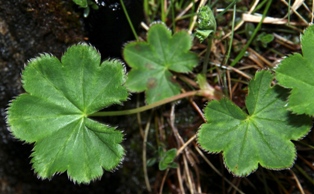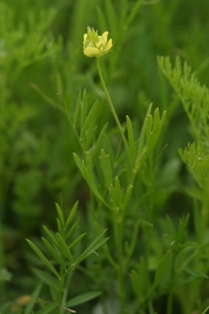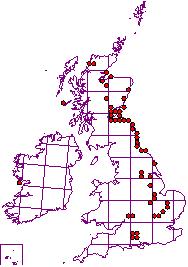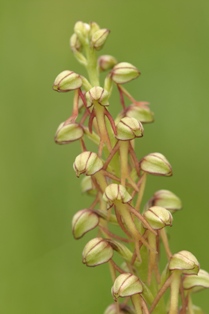The Threatened Plants Project
The Threatened Plants Project (TPP) was a five year BSBI voluntary initiative to learn more about ‘threatened’ species covered by the new British Red List. Results from the project were published in Threatened Plants in Britain and Ireland (2017). The TPP focused on widespread species that had been classified as threatened for the first time, mainly because the 2002 Atlas showed them to have undergone rapid declines. For most species, we had very little information on their distribution, ecology and reasons for decline.
Aims
1. To collate detailed distribution records so that we can produce better maps for each species;
2. To carry out detailed surveys of a random sample of populations across Great Britain and Ireland so we can improve or understanding of their ecology and reasons for decline.
Outputs
Find out what we learned from the Threatened Plants Project in these two outputs:
Our book Threatened Plants in Britain and Ireland, based on five years of TPP survey work, was published in November 2017 and reprinted in May 2018. Read more about the book here, read an interview with lead author Kevin Walker, BSBI's Head of Science, here and buy a copy of the book here.
A TPP presentation by co-author Pete Stroh, BSBI's Scientific Officer, summarises the project and what we learned from it. Download the TPP presentation here.

What did the results tell us?
The information collected for this project allowed us to do much more than plot dots on maps. Surveyors recorded all sorts of additional information that was vital to improving our understanding of species' ecological and management needs as well as responses to land use and environmental change. The recording form asked for information on population sizes, extent, habitats, associated species, as well as management and threats. A novel feature of this project was the submission of negative (null) records, as for many species these can be even more informative than positive finds, especially where it's difficult to understand the reasons for decline. Good examples from the project included upland species such as Crepis mollis and Sibbaldia procumbens which may have been over-looked in the past rather than being in decline.
How have the TPP results been used?
Analyses of the results fed into BSBI species accounts which include assessments of the plants' ecology, habitats and recent trends we could draw out from the light of information gathered during the TPP. These species accounts can be used in tandem with the England Red List and will hopefully stimulate further surveys and research on these species, as well as informing improved conservation protection and management.

A baseline for the future
The sample survey also provided a baseline from which future population changes could be assessed and helped us to better understand environmental changes (e.g. habitat loss, eutrophication, climate change). More generally the project also helped to refine the BSBI’s approach to the monitoring of rare and threatened species.
The 2010 Report
The 2010 report looked at results from the first two years of the project; our recorders had, by that point, surveyed nearly 1500 populations of the 20 target species across Britain and Ireland, as well as contributing 1000s of “new records”. The map for Astragalus danicus (below) is illustrative of just how good the coverage was, with recorders managing to survey populations across the entire range, even isolated populations on the west coast of Scotland and Ireland.


Species covered
- Alchemilla wichurae
- Anacamptis morio
- Astragalus danicus
- Baldellia ranunculoides
- Blysmus compressus
- Bupleurum tenuissimum
- Campanula patula
- Carex ericetorum
- Cephalanthera longifolia
- Chrysanthemum segetum
- Cicendia filiformis
- Coeloglossum viride
- Crepis mollis
- Cuscuta epithymum
- Dianthus deltoides
- Fallopia dumetorum
- Fumaria parviflora
- Galium pumilum
- Gentianella campestris
- Gnaphalium sylvaticu
- Groenlandia densa
- Herminium monorchis
- Hordeum marinum
- Hypochaeris glabra
- Juncus compressus
- Juniperus communis*
- Melampyrum cristatum
- Melittis melissophyllum
- Meum athamanticum
- Monotropa hypopitys
- Oenanthe fistulosa
- Ophrys insectifera
- Orchis anthropophora
- Orchis ustulata
- Persicaria minor
- Polystichum lonchitis
- Pseudorchis albida
- Pyrola media
- Ranunculus arvensis
- Scleranthus annuus
- Sedum villosum
- Sibbaldia procumbens
- Silene conica
- Sium latifolium
- Stellaria palustris
- Tephroseris integrifolia subsp. integrifolia
- Torilis arvensis
- Vicia orobus
- Vicia parviflora
- Viola lactea
* lowland populations in England only.